For safety and extending the service life of tires, it is necessary to maintain the required pressure in them, check it regularly and bring it to normal
It is also necessary to check tire pressure when the ambient temperature significantly decreases or increases and before driving long distances
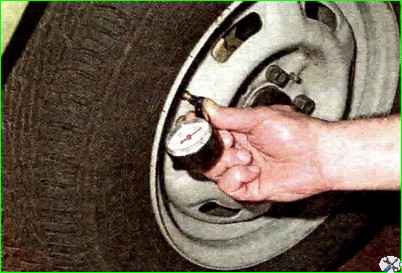
Unscrew the cap of the wheel valve and connect a tire pressure gauge or a pump with a pressure gauge to the valve.
If the pressure is lower than required (see table), use a tire pump or compressor to inflate the tire, monitoring the pressure using a pressure gauge.
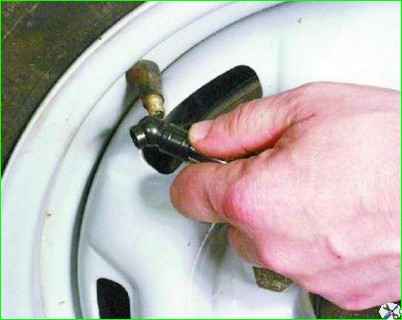
If the pressure is higher than required, press the special protrusion of a pressure gauge (or a suitable tool) onto the spool, release air from the tire in small portions and check the pressure.
Tires should not have swelling, tread separation, or damage that exposes the cord.
It is prohibited to install tires of different models on the same axle, as well as tires that do not match the size or load of the vehicle.
The remaining tread height must be at least 1.6 mm.
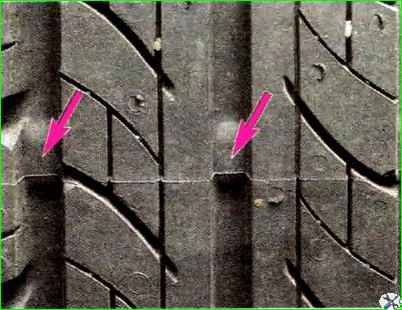
To monitor tread wear, indicators in the form of protrusions 1.6 mm high are made in its grooves.
At the locations of the wear indicators on the sidewalls of the tires there are marks in the form of the letters “TWI”
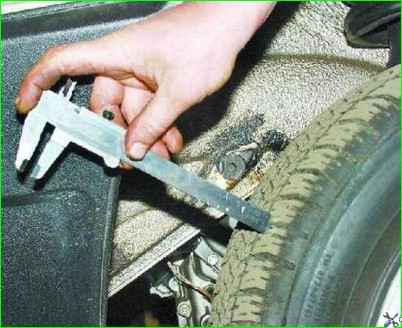
The degree of tire wear can be determined by measuring the remaining tread depth with a caliper
We regularly check the tightness of the wheel bolts and, if necessary, tighten the bolts.
If vibrations occur while driving on a flat section of road in a limited speed range, you need to have the wheels balanced at a tire shop.
Vibration at all speeds can be caused by patchy tire wear, swelling or other damage, or deformation of the rim.
Replacing wheels
To change a wheel, place the car on a level area with a hard surface.
Slow down the car with the parking brake and engage first or reverse gear.
Remove the jack and wheel wrench from the luggage compartment.
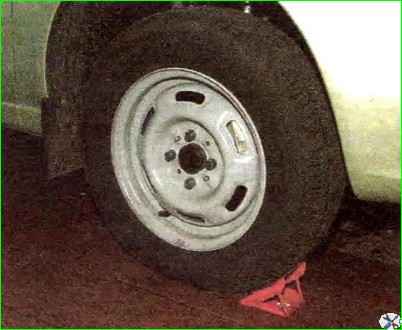
For more reliable fixation of the car, place a wheel chock or a suitable stop (stone, wooden block, etc.) under the wheel located diagonally from the one being removed.
Before lifting the car, passengers must leave the cabin.
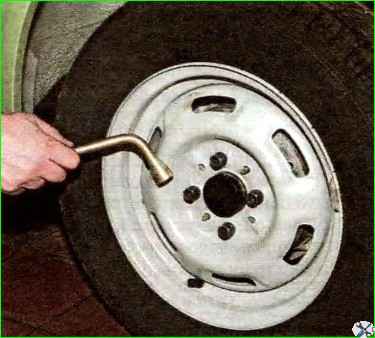
Using a standard wheel wrench or a wrench with a 17mm head, loosen the tightening of the wheel mounting bolts by one turn.
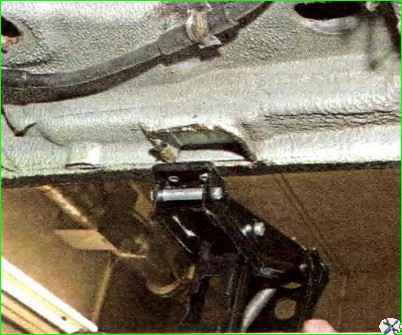
To install a standard jack, four special sockets (stampings) are made on the thresholds of the car.
Install the jack so that its support pad fits into the socket closest to the wheel being replaced.
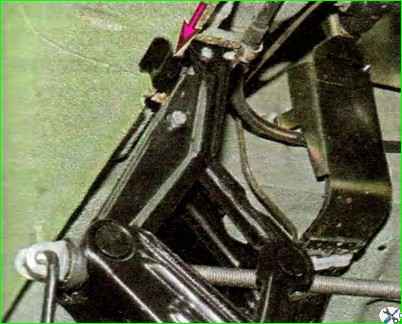
In this case, the hook of the platform should catch on the edge of the threshold.
The heel of the jack must be located exactly under the support platform.
Rotate the jack handle clockwise to raise the car until the wheel to be replaced comes off the supporting surface.
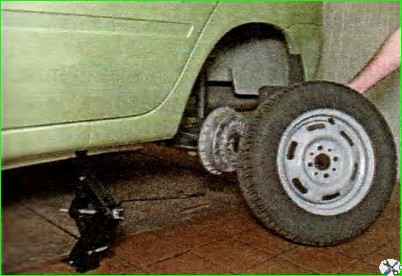
After unscrewing the mounting bolts, remove the wheel.
Having installed the spare wheel, tighten the fastening bolts by hand.
Hold the wheel with your hand and tighten the bolts with a wheel wrench.
Lower the car and evenly (crosswise) tighten the bolts to a torque of 80-90 Nm.
The end of the handle of a standard wheel wrench (handle length 180 mm) must be pressed with a force of 44-50 kg.
The tire treads of the front wheels wear out faster than the rear wheels.
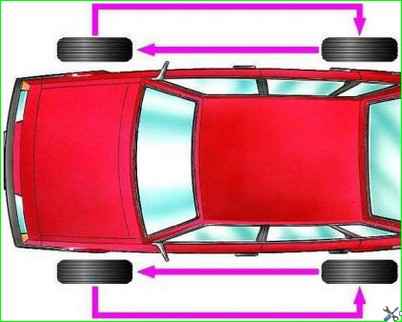
To ensure even tire wear, it is recommended to rearrange the wheels after 30 thousand km in accordance with the rearrangement scheme.
Check your tire pressure periodically.
Tire size 175/70R13
Air pressure in tires, MPa (bar) with a load of no more than three adults and without cargo in the trunk:
- Front tires 0.19 (1.9)
- Rear tires 0.19 (1.9)
Air pressure in tires, MPa (bar) with a load of more than three adults or three adults and a load of 50 kg in the trunk:
- Front tires 0.19 (1.9)
- Rear tires 0.21 (2.1)
Tire size 175/65R14, 185/60R14
Air pressure in tires, MPa (bar) with a load of no more than three adults and without cargo in the trunk:
- Front tires 0.20 (2.0)
- Rear tires 0.20 (2.0)
Air pressure in tires, MPa (bar) with a load of more than three adults or three adults and a load of 50 kg in the trunk:
- Front tires 0.2 (2.0)
- Rear tires 0.22 (2.2)
Increased or decreased pressure leads to premature tire wear, which deteriorates handling and stability.
To ensure that the tires wear evenly, rearrange the wheels in accordance with the diagram every 30,000 km.
Also, every 30,000 km, balance the wheels and adjust the angles of the front wheels.





